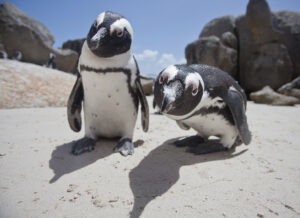A passion for the natural world drives many of our explorations and adventures. And when we’re not actually outside, we love delving into the discoveries being made about the places where we live and travel. Here are some of the best natural history links we’ve found this week.
Narwhal Tusks are a Window Into the Ever-Changing Arctic: The animal tusks act like rings in a tree trunk: They show what the narwhals have eaten, where they have eaten, and how much exposure they have had to pollution over 50 years of sea-ice decline.
Antarctic Glaciers Breaking Free: Along the coast of West Antarctica, the massive Pine Island and Thwaites Glaciers are breaking free from the restraints that have held them in check for millennia, threatening sea-level rise on an unprecedented scale.
Some Corals can Cope with Climate Change: Colonies of stony corals in the Indo-Pacific are often known as “the rainforests of the sea”. Scientists have found that these corals are made up of a biomineral with proteins similar to those in our bones. These proteins allow them to form hard skeletons that might withstand the effects of climate change.
Genome Reveals Ancient Human Migration: Genetic sequencing of 45,000-year-old human remains has shown that intermixing of humans with Neanderthals was more common than suspected.
Ancient Plant DNA Intact under Baffin Island Lake: Research carried out by the University of Colorado Boulder suggests that the Arctic had a much greener appearance 100,000 years ago.
Lightning in the Arctic: Northern lights have always intrigued people, but another type of illumination — lightning — in the normally dry polar regions is rare. Over the last 10 years, lightning has tripled in frequency, prompting meteorologists to investigate.
Underwater Photos Capture Usually Unseen Ocean Creatures: The open ocean hosts a billion billion tiny creatures. They are usually semi-transparent and so small that they slip through research nets. Now underwater photos taken at night reveal the true beauty of these animalcules and their role in the workings of the ocean.
Survival of the Arctic Sponge: Deep-sea sponge beds survive in a world of no light and no obvious food sources. The SponGES research project has collected a year of video footage from these beds that provide answers and clues as to how these colorful creatures survive in the harsh deep-sea environment.
Good and Bad News for African Elephants: Eighteen million square kilometres of Africa is still — theoretically — suitable for the ever-decreasing population of African elephants. This raises hope for their future survival. Sadly, the study also reveals that the elephants’ actual range has shrunk to just 17 percent of this potential habitat.
Space Dust Covers the Earth: A 20-year study has concluded that 5,200 tons of micrometeorites penetrate our atmosphere every year. The dust comes from comets and asteroids that pass past our planet and has led to a rise in shooting stars.






